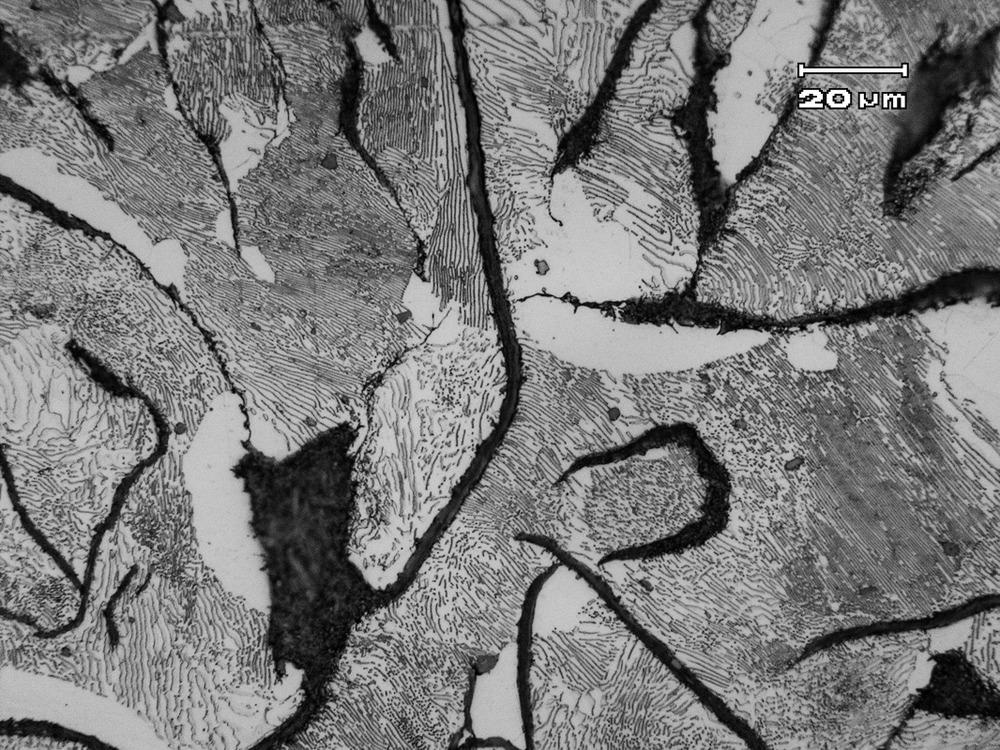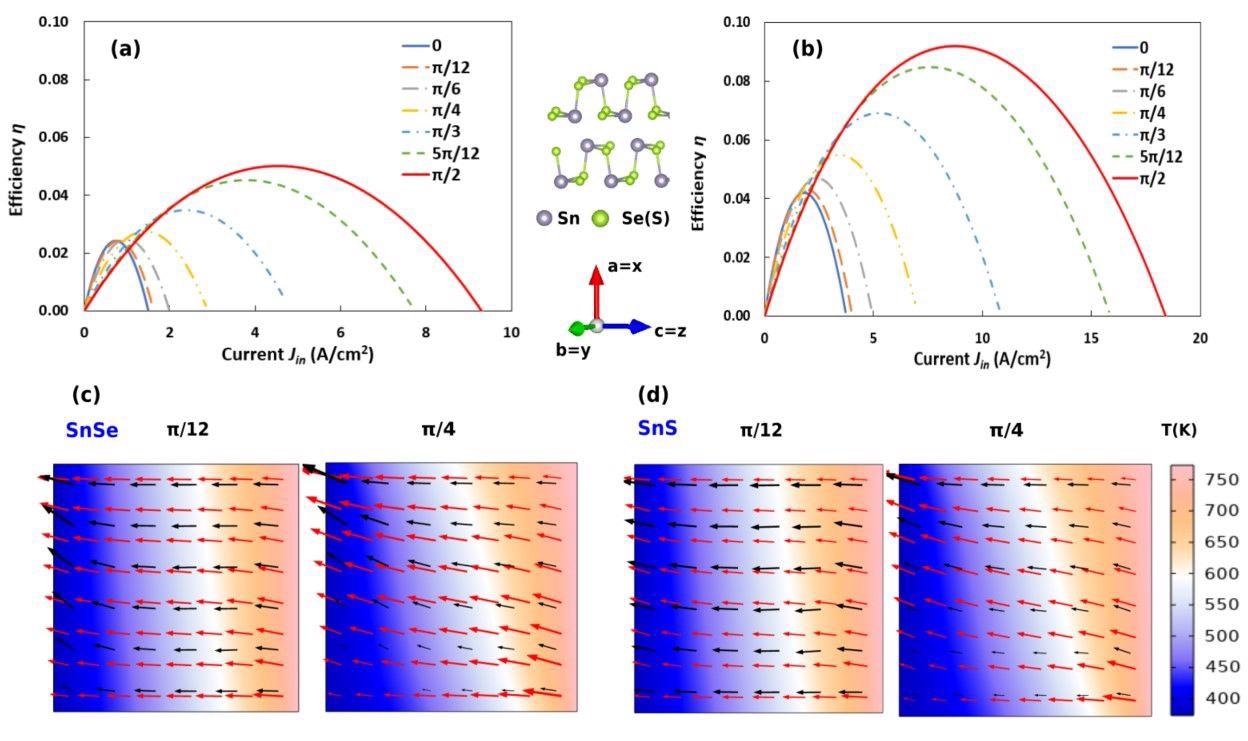Researchers found that through compositing layered anisotropic materials, the increased thermoelectric energy conversion efficiency can be achieved in two directions of measurement. The research is presented as an accepted manuscript in the journal JPhys Energy.

Micrograph of anisotropic cast iron. Study: Thermoelectric efficiency of anisotropic materials with an application in layered systems. Image Credit: High Simple/Shutterstock.com
Thermoelectric materials can convert energy for various applications. Based on the Seebeck effect, they can convert a change in temperature into electricity, and based on the Peltier effect, they can convert electric power to cooling.
Although the power generated is not in a large amount, such as that from steam engines or electric turbines, there are many promising applications for the small energy generated through thermoelectric materials.
Some of these applications include noise-free power generation, use in aerospace, and even in wearable/implantable electronic devices in the human body. However, due to low energy conversion, the research in this field is mostly limited to finding efficient thermoelectric materials.
As the ultimate application of the material is dependent on the thermoelectric material properties, an understanding of the microscopic electric structure and the macroscopic thermodynamic factors influencing the material is necessary.
This huge challenge brings opportunities for various nations and companies to enhance the market in this sector.
Enhancing the efficiency of the device is a significant parameter that requires improvement. In the study presented in the journal Energy, this is represented as zT and is dependent on factors such as the Seebeck coefficient (S), electrical conductivity (s), temperature (T) and thermal conductivity (k).
Anisotropic Thermoelectric Materials
Anisotropic materials are the ones whose properties vary with the direction of estimation in the material.
Anisotropic materials such as Tin Selenide (SnSe) and Tin Sulfide (SnS) have properties with high dissimilarity in different directions of the material; such materials are highly suitable for thermoelectric energy conversion.
Two-dimensional anisotropic materials have gained interest due to the anisotropic charge transport properties, in addition to benefits due to low dimensionality.
In a recent publication by a Shi et. al. from the University of South Florida, the thermoelectric energy transport in anisotropic two-dimensional materials, SnSe and SnS, from the macroscopic thermodynamics point of view have been investigated.

TE efficiencies for (a) SnSe and (b) SnS as a function of the incoming current density. Electric (black arrows) and heat (red arrows) current distributions for (c) SnSe and (d) SnS for two rotation angles. The background color scheme for the temperature distribution is indicated as T(K) color bar. A schematic representation for the crystal structure of both materials together with the lattice vectors and axis are shown between the top two panels. Image Credit: Shi et. al., Energy
Thermoelectrical Conversion in Anisotropic Materials
In this work, current distribution and conversion efficiency of the samples were calculated through finite element methods.
The current was measured when the sample was rotated, therefore it is thought that the charge transport does not occur in a preferred direction. Further, based on the findings, a material with unique anisotropy was designed by the researcher.
The thermoelectric material developed showed the same thermoelectric conversion efficiency in two directions while their other properties were markedly different. This kind of feature is not seen in natural materials.
In natural anisotropic thermoelectric materials, the thermoelectric conversion is more efficient in only one specific direction of the material.
In this work, the special thermoelectric property was achieved through forming bilayered composites of SnSe and SnS.
The advantages of such a bilayer composite is that the individual layers of the composite have their own transport properties that are dissimilar. In addition, the different orientations of the bilayer could provide many possibilities of anisotropic thermoelectric transport.
Screening the Anisotropic Layered Material
In natural materials, the thermoelectric conversion efficiency is largest in the direction where the figure of merit is at a maximum.
However, in the case of the composite bilayered structure reported in this publication, the figure of merit is maximum in two directions.
The thermoelectric conversion efficiency reported in the work is largest at two directions along with the figure of merit. This is advantageous for various practical applications.
This work shows the possibility of obtaining the maximum efficiency by more than one current value by simply rotating the bilayer composite structure.

(a) TE conversion efficiency for an anisotropic TE material with properties taken as σxx = 2 × 105 S/m, σyy = 1 × 105 S/m, κxx = 0.4 W/(m⋅K), κyy = 0.05 W/(m⋅K), Sxx = 60 μV/K, Syy = 30 μV/K as a function of input current density for different angles of rotation. (b) TE conversion efficiency for a composite with N = 10 bilayers with properties σA = 341421 S/m, SA = 4.708 μV/K, κA = 0.77 W/(m⋅K) and σB = 58578.6 S/m, SB = 382.2 μV/K, κB = 0.0258 W/(m⋅K). (c) Currents distributions with temperature for the original material (top row) and bilayered composities for different angles of rotation and layer incliniation, respectively. The red arrows correspond to heat currents, and the black arrows to electric currents. Image Credit: Shi et. al., Energy
Future Perspectives of the Work
This study shows the possibility of compositing layered anisotropic materials for different thermoelectric conversion functionalities.
New properties of the material can be evaluated by finding suitable materials and studying the thermoelectric properties of the composite structures.
This work broadens the concept of thermoelectric transport properties of anisotropic materials. In addition, it shows the possibility of design strategies to achieve different thermoelectric conversion efficiencies in terms of different working conditions.
References and Future Reading
Shi et. al. (2021) Thermoelectric efficiency of anisotropic materials with an application in layered systems Journal of Physics: Energy https://iopscience.iop.org/article/10.1088/2515-7655/ac3566
Tao et.al. (2021) Anisotropic Thermoelectric Materials: Pentagonal PtM2 (M= S, Se, Te) ACS Applied Materials & Interfaces 13 8700 https://doi.org/10.1021/acsami.0c19460.
Nielsen (2021) Thermoelectric Materials: Current Status and Future Challenges Frontiers in Electronic Materials 1 1 https://doi.org/10.3389/femat.2021.677845.
Disclaimer: The views expressed here are those of the author expressed in their private capacity and do not necessarily represent the views of AZoM.com Limited T/A AZoNetwork the owner and operator of this website. This disclaimer forms part of the Terms and conditions of use of this website.